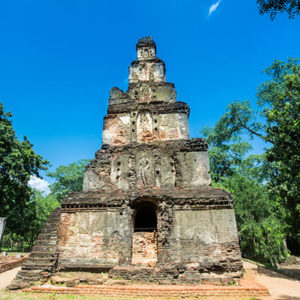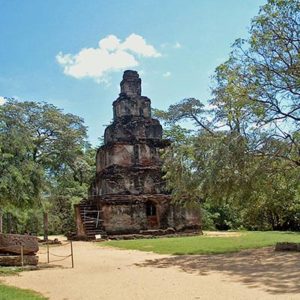

sathmahal-prasadaya
sathmahal-prasadaya-polonnaruwa
The ancient town of Polonnaruwa in Sri Lanka’s northern central province is renowned for its ruins by prestigious landmarks dating back to the 12th age. Tourists therefore acknowledge this town as an important cultural site in tourism in Sri Lanka.
Sathmahal Prasadaya or the 7-storied palace is a pyramid shaped construction which is believed to be of the Polonnaruwa era, which era was between the 11th and 13th centuries. Some claim, however, that this structure is very comparable to Siam and Cambodia’s stupas. The stupa was constructed as homage to Cambodia and as a sacred place to be worshiped in ancient Sri Lanka by the Cambodian troops who worked for the King.
This was a seven-story mansion in the past. In order to reach the upper stories, you can take the stairway that leads to them. The mansion’s initial creator is still unknown, and is his name as well. The Sathmahala Prasadaya is a four entrance building and stands at a height of 9 meters. The structure is a rare one that has stood the tests of times in Sri Lanka and still remains in all its glory. However, due to the strong sunlight and its direct exposure to it, the building is now fading in color
In Sri Lanka there are 4 recognized square-shaped stupas. The Sathmahal Prasadaya is the most famous. The remaining 3 stupas can be discovered in the ancient kingdom of Anuradhapura, which the pilgrims rarely visit. Nakha Vehera is one of those stupas. The other 2 belong to the Monastic Complex of Abhayagiriya. The Indikatu Seya (aka Prasada Stupa) is one of them. The other stupa is in the south of Eth Pokuna on the Abhayagiri Monastery’s western boundary.
Although Polonnaruwa faced the wrath of invasions by the South Indian Dravidians, it is significant that the country came to benefit from the numerous ancient relics that are proof of the works of these people.


